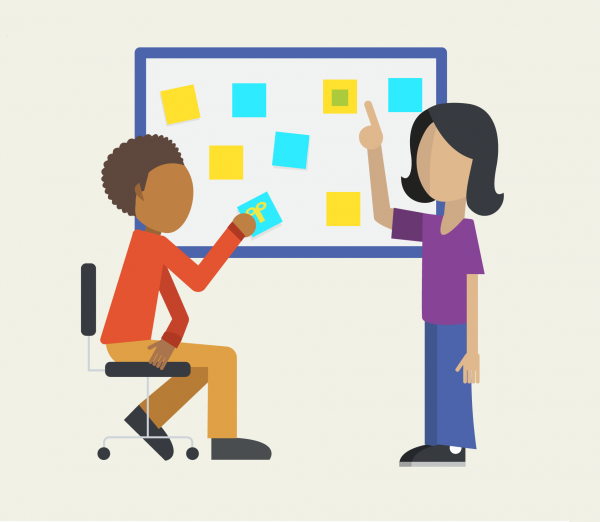
This activity is grounded in the idea of designing for a specific user and can be a great introduction to human-centered design methodologies. This method is defined by the following five steps:
Empathize ~ Define ~ Ideate ~ Prototype ~ Test
Interviewing typically falls in the empathize stage of human-centered design and allows a person to better understand and empathize with the user. Think of the interviewing process as a way to engage a person in conversation, rather than solely collecting information about them. By the end of the interview, the interviewer wants to have captured not just what a person did and said, but how that person feels and what they think.
Here are a few guiding principles that will help you as the interviewer capture and understand how your interviewee feels and what they think:
When asking questions:
When listening to your interviewee’s responses:
Experiment with structuring interview questions as you go through your day. As you have normal everyday conversations with friends, family and teachers, try to avoid binary questions by turning them into open ended questions. (For example, you might take a binary question like “do you want to play outside?” and make it an open-ended question such as “what do you want to do for fun?”) You can also try this exercise with non-neutral questions and questions
that generalize.
Practice interviewing by using the guiding principles above to conduct an interview with a peer or family member.
Listen to this interview from StoryCorps (or read the transcript linked on the page). What do you observe about the questions being asked by the interviewer? Which questions are eliciting stories from the interviewee?
Pair up with a partner to take turns conducting an interview. In the interview, you are trying to discover what makes your interviewee happy.
You are encouraged to ask questions that lead to stories and specific insights about what makes your interviewee happy. For example, if the interviewee brings up their friends, dig for deeper insights by asking them to describe their friends, tell stories about their friends, recall how the friendship began, and so forth. If possible, record the interview on video or a voice recorder so you can focus on engaging your interviewee.
As you interview, jot down notes about what your interviewee is saying and doing. What insights are you picking up throughout the interview?
After you finish the interview, reflect and discuss the following with your partner:
This project is adapted from Interviewing Skills, Stanford d.School K12 Lab Wiki.
Produced by Digital Promise Global, with thanks to the Open Educational Resources listed throughout this guide. Distributed to Learning Studios schools as part of HP, Inc. and Microsoft’s Reinvent the Classroom.
This work is licensed under a Creative Commons Attribution-ShareAlike 4.0 International License. You may share this project or modified versions of it under this same license.

We want to hear from you!
Please take this 5-minute survey and help us serve you better.
